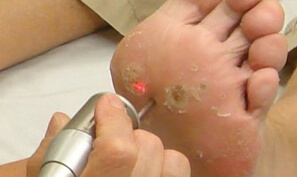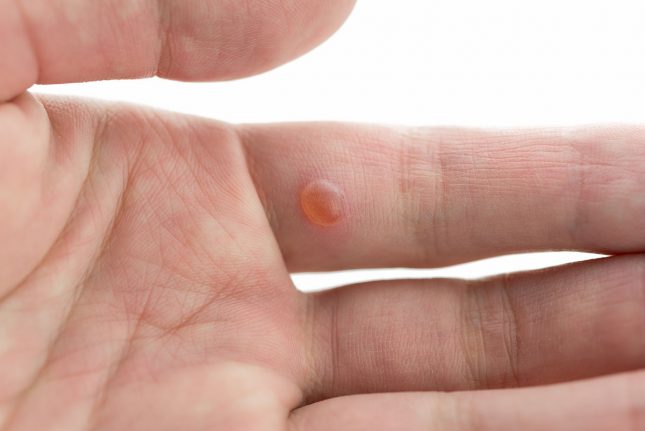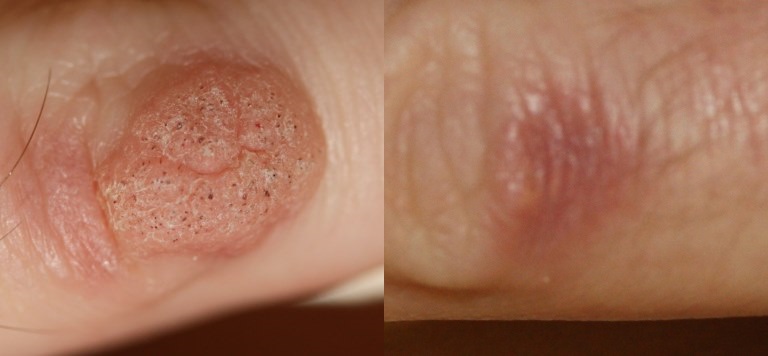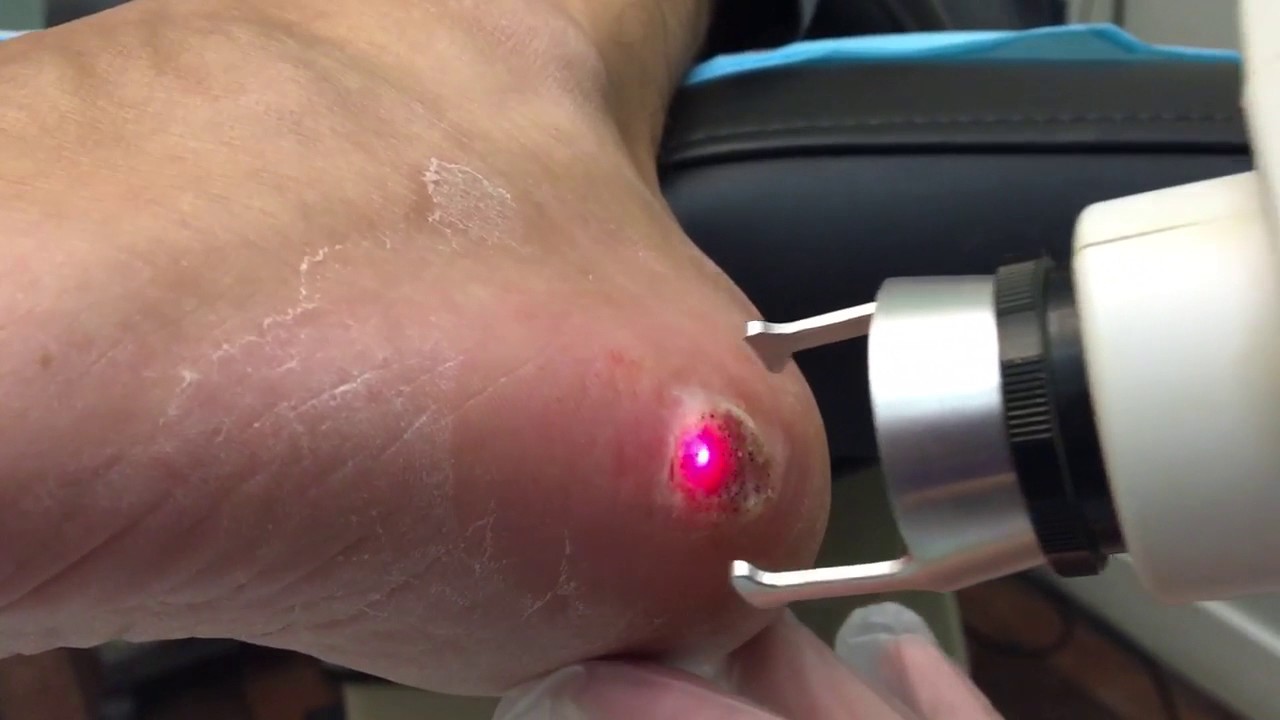admin
Latest posts by admin (see all)
- Wart Cream: Which One to Choose? - October 14, 2019
- Wart Freeze: How Does the Cryodestruction Take Place? - October 11, 2019
- How to Use Salicylic Acid for Warts Removal? - October 8, 2019
What an unpleasant phenomenon – warts! Do you agree? Everyone remembers how mothers and grandmothers tried to get rid of warts by a variety of homemade remedies. Today, medicine can offer truly modern and effective methods of combating warts. And, perhaps, one of the most effective methods is laser wart removal.
Warts are a type of benign neoplasms. But this does not mean that they are absolutely harmless. Moreover, there is always the risk of degeneration of benign formation into malignant, therefore, one should not postpone the visit to a specialist. Keep in mind that before the procedure of laser removal of warts, it is necessary to consult an oncologist, who will confirm the benign nature of the specific tumor. Find out how warts can be removed with the help of a laser and which peculiarities this procedure has.
Contents
- Laser Procedure Features and Peculiarities
- Contraindications:
- Laser Warts Removal during Pregnancy
- Laser Wart Removal in Children
- How is the Laser Procedure Performed?
- Advantages of the Laser Method
- Recommendations You Should Follow after the Laser Removal Procedure
Laser Procedure Features and Peculiarities
The effect of the laser beam on the wart is based on the principle of selective photothermolysis. In simple terms, this means that the laser only affects the wart and does not affect healthy tissues at  all. The laser beam, deeply penetrating into the body of the warty formation, instantly warms up and seals the vessels feeding it and this initiates the process of “withering” of the wart.
all. The laser beam, deeply penetrating into the body of the warty formation, instantly warms up and seals the vessels feeding it and this initiates the process of “withering” of the wart.
Then, for a short time (about two weeks), the wart dries up and disappears on its own. But perhaps the most important advantage of our technique is the fact that after the procedure there are no open wound surfaces and no special sanitary measures are required from the patient to prevent infection of the wound. This is especially useful in the case of plantar warts. The technique is also characterized by the absence of bleeding, burns, inflammatory complications, as well as post-traumatic scarring and pigmentation.
Here, there are the main features of the laser wart removal procedure:
- removal of the wart by the laser is done once and forever;
- the procedure is completely painless and bloodless (since the vessels under the action of the laser are “sealed”);
- very rapid wound healing (as a rule, complete healing takes place within 5-10 days);
- at the place of removal, there are no traces (as modern lasers penetrate only to a specified depth without leaving scars and other defects), a maximum (in cases of large warts diameter) may remain a barely noticeable bright spot.
- All this makes it possible to effectively use laser removal even in children, as well as in the most sensitive and delicate places (eyelids, lips, intimate organs).
Contraindications:
Like any medical procedure, the use of a laser for warts has certain contraindications. Check them before making the laser wart removal:
- pregnancy, lactation;
- oncological diseases;
- diabetes mellitus and other chronic diseases in the stage of decompensation;
- autoimmune diseases;
- epilepsy;
- inflammatory diseases accompanied by fever;
- skin diseases in the treated area;
- tendency to form keloid scars.
Laser Warts Removal during Pregnancy
Traditionally, it is considered that during pregnancy it is undesirable to take medicines or conduct any interference, since all these actions can have a negative impact on the developing fetus. What if the cutaneous formations appeared during the fetation? If it’s not about genital warts in the genital area that can infect the unborn child during labor, you can wait until the end of the pregnancy to remove the rest of the warts. It is best to perform laser removal before delivery (in the presence of warts) or in the postpartum period.

Laser Wart Removal in Children
Laser removal is considered to be the most gentle method, therefore it is widely used to treat warts in children. The difficulty is that after the intervention the child does not tear out the crust that formed earlier than it is allowed. To prevent this from happening, it is best to isolate the wound with a bactericidal plaster.
How is the Laser Procedure Performed?
Laser removal of warts is one of several ways to get rid of infectious benign neoplasms on the skin. Their appearance, as well as the possibility of infection, directly depends on microtraumas on  the epidermis and on the stability of the human immune system. Removal of warts can be carried out in several ways. The method of electrocoagulation is very painful, requires a long rehabilitation period and almost always leads to the formation of a coarse rumen.
the epidermis and on the stability of the human immune system. Removal of warts can be carried out in several ways. The method of electrocoagulation is very painful, requires a long rehabilitation period and almost always leads to the formation of a coarse rumen.
The action of nitrogen is also very painful. For a complete removal, a fairly large number of procedures are necessary, there may be cases of recurrence, after a course, scars often remain. So laser removal of warts is the most effective method of treatment. Removal of warts is done with a carbon dioxide laser. It acts on the surface of the skin without injuring it. The removal of the wart itself occurs due to the laser evaporation of its body. After the procedure, it should take some time before the remote wart disappears forever.
Advantages of the Laser Method
Of course, today warts can be removed in various ways, each of which has its pros and cons (electrocoagulation, cryosurgery, radio wave, etc.). Laser wart removal is considered one of the effective methods, which has obvious advantages. These include:
- On the body, there is no scarring or gross scars.
- The doctor can control the depth of penetration of the laser beam.
- For a complete removal of tumors, one session is enough.
- Fast healing after the procedure.
- Sterility of the method and safety.
- Using a laser, warts can be removed at any part of the body.
Recommendations You Should Follow after the Laser Removal Procedure
After the treatment with the help of a laser, you can safely continue the day as you wish. Keep in mind that in 3-5 minutes after the procedure, you may have a slight inflammatory reaction at the laser exposure site. At the same time, there is no need to apply special measures other than local cooling. Edema and redness will disappear within 6-24 hours. The doctor can recommend you in the first 3-5 days after removal of the cutaneous lesion to treat the wound surface with an anti-inflammatory, antiseptic or wound-healing agent.
Let’s pay attention to several rules that are important to follow after the procedure:
- Firstly, 2-3 weeks you should avoid sunbathing in the sun and in the solarium, and it is generally recommended to appear on the street as rarely as possible, if the treated area is on the face, hands, or any other open areas.
- Secondly, for a while you will have to forget about saunas, hot baths, swimming pools, baths.
- Thirdly, the laser treated area cannot be wiped with alcohol-containing compounds. Also it is impossible to tear off the crust formed in any way. When everything is healed, it will fall off by itself.
After removal of the skin lesions by the laser in the summer, the removal sites must be protected from exposure to UV radiation. Use a wide-spectrum sunscreen (SPF not less than 50) until erythema (reddening of the skin) passes.
The dynamics of the wound surface after laser destruction is as follows:
- In the first days after the procedure, a scab is formed. It should not be removed mechanically. This can lead to a violation of epithelialization (healing). It is rejected on its own on the 6th-9th day.
- A bright pink hole opens on the spot of the separated scab.
- Within 1-2 months the wound surface is leveled relative to the rest of the skin surface and its color is normalized. That is, the healing process is completed.

It is very important in the postoperative period to adhere to the rules of hygiene and follow the doctor’s recommendations because of the risk of infection of the wound surface. In particular, avoid getting water into the wound. To do this, before taking a shower, apply a waterproof plaster.
Laser wart removal is extremely effective: studies show results in 90-95% of successful treatment of primary warts. But, unfortunately, usually patients go to the doctor of the laser clinic after other methods have been ineffective. As a rule, these are secondary and intractable forms, since in this case the virus particles can be located more than 1 cm from the clinically visible wart. In these cases, the effectiveness of laser treatment is reduced to 45-50%. That’s why you should make a decision concerning the laser wart removal as soon as possible.
